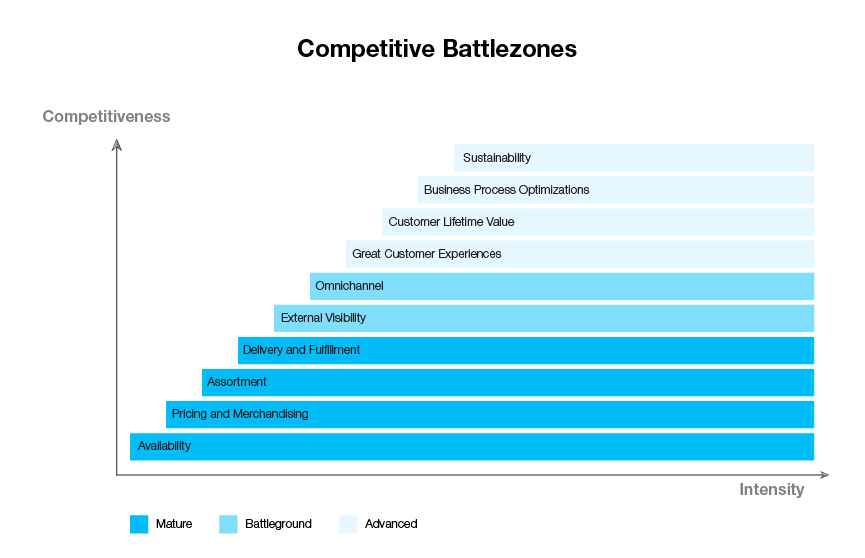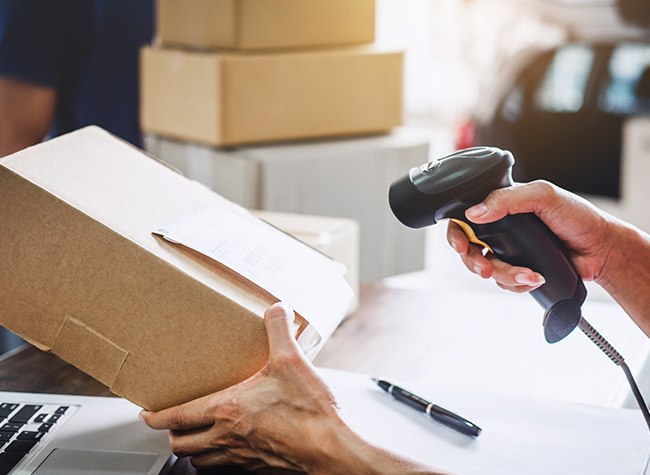dezembro 02, 2021
Over the past year and a half, almost all e-commerce companies, retailers, and brands playing in the e-commerce space have experienced extraordinary growth and increasing profitability. The COVID-19 pandemic lock-down gave the industry a significant boost due to closed stores and decreased spending in other categories such as travel & leisure. This means that e-commerce has essentially been riding a wave – and thoroughly enjoying the ride!
This new high on overall e-commerce penetration is partly owed to new customer groups that have traditionally been reluctant to move online. As a result, the e-commerce industry is larger than ever – the “cake” has been expanded. However, continuing these levels will be extremely difficult, and we foresee that only the most professional e-commercers will be able to continue growing in the coming years.
What many e-commercers have forgotten is that a year and a half ago, competition was already increasing, and growth rates were lower than many were used to in the first waves of the e-commerce era.
As a result, it is not surprising that growth rates are now declining to more moderate levels – and not just because physical stores have opened again or because of the difficulties getting access to goods due to the global supply chain situation. Companies are back to looking at areas that are tougher to affect in order to improve or sustain growth.
With Coronavirus starting to be in the rear-view mirror, the question is: Were your e-commerce strategies strong enough to continue your growth trajectory, or were you just lucky? If your growth is suddenly disappearing, you were probably just sailing along in the strong corona wind, and thus, lucky. The good news is that you only need to focus on the things that are moving the needle in e-commerce to progress from luck to being a top-performing e-commerce professional. Another piece of good news is that most of your competitors aren’t really there yet either.
But where should you focus to move the needle in your company?
In our experience, what moves the needle in e-commerce are the areas that we have chosen to call “competitive battle-zones,” which cover a combination of market and internal perspectives and capabilities. We call them battle-zones because they represent areas that all e-commerce shops need to continuously battle to stay competitive. We also call them battle-zones because being skilled in one zone will unleash further growth. There is one catch to it though: The more competitive the market is, the more battles you need to have to continue growing.
Our goal with this article is to help you navigate and focus your efforts because we believe competition and growth will be significantly more fierce in the coming months and years. We want to help you become more than just lucky.
The competitive battle-zones
We have both been part of the e-commerce industry for the past 10 years in various roles, and it has become clear to us that the competitive factors on which e-commercers compete have been somewhat similar across B2C categories and industries. We foresee that B2B companies will face some of the same factors in the future if they haven’t already.
When looking at competitive factors and the intensity of competition, we have identified 10 mutually exclusive battle-zones. These are characterized as “staying battles” because they are the ones that companies need to face. However, as growth decreases and competition gets fiercer, more battle-zones open up, and companies will start to show whether they are skilled or just lucky.
The identified battle-zones are described in the graph below:
 Before we jump into describing each battle-zone, the graph should be read as the 10 battle-zones that open up as market intensity increases. The more battle-zones that are open, the more pressure (headwind) e-commerce organizations will face. Finally, each battle-zone evolves individually, yet they remain a battle-zone, meaning these are areas where companies will need to continuously focus.
Before we jump into describing each battle-zone, the graph should be read as the 10 battle-zones that open up as market intensity increases. The more battle-zones that are open, the more pressure (headwind) e-commerce organizations will face. Finally, each battle-zone evolves individually, yet they remain a battle-zone, meaning these are areas where companies will need to continuously focus.






Battle-Zones –
and then what?
We want to turn our attention to the competitive battle-zones, since we believe that an understanding of them, how they affect you, and how you can work on them is an essential starting point. You need to have an educated view on how you address each of these. As a next step, you need to decide where you double down in 2022 to get back ahead of the curve in your competitive landscape. In other words, you need to master your battle-zones to gain a true stronghold because it still holds true that “what you spent your time and attention on is typically what you get really good at...”
In order not to make it too philosophical, we want to highlight a few things you can do now. You can start reflecting on the following five crucial questions concerning battle-zones.
- Where do you spend most management time and focus – and is this the right priority?
- Where do you invest, and is your investment focus correct and balanced?
- Do you have the right and best people in each battle-zone, and do you have sufficient diversity to solve and master each battle-zone?
- Are you using data sufficiently to make and improve your battle-zone performance?
- Which competitors are you looking at, and should you look more broadly?

Our experience is that these meta-questions are often overlooked and under-discussed when daily business kicks in. We also highly recommend that you get closer to what happens in customer service and get a better understanding of your data foundation – because it is in the details from the battle-zones you can detect whether you are lucky or you are actually doing things very well.
We sincerely hope that you find value in this article, and hopefully, it sparked the inspiration to review some of your activities. If you want to continue the conversation, please do not hesitate to reach out to Carsten Pingel.
About the Authors:
Carsten Pingel has been working within digital strategy and business development for the last 15 years. Former experience includes acquiring and scaling high-growth, multi-brand e-commerce businesses, and enabling digital transformation in the largest Nordic media group, Egmont, business development and strategy at Copenhagen Airports, and board positions in high growth e-commerce and SAAS companies. Now Carsten is leading the strategy consulting unit within Valtech, helping companies in their digital transformation, and utilizing data to accelerate growth.
Toke Lund has been working within management consulting, heading up the strategy office and the consumer insights office at the LEGO Group, driving digital transformation at Salling Group, and working as a digital strategy consultant at Novicell. Now Toke has founded Enterspeed, a software company delivering a high-performance product called “The Headless Hub.”










